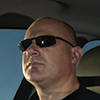Police in China have raided a factory with 33,000 counterfeit car safety parts -- including bogus airbag and brake components -- that were destined to be sold in Australia.
In a case reminiscent of tracing drugs back to their “Mr Big” source, authorities eventually identified the manufacturer following a Federal Court case against distributors of dodgy car parts in Sydney and Melbourne.
Last year Toyota took action against independent distributors who were selling counterfeit airbag spiral cables (which trigger the airbag during a crash) and brake pads containing asbestos, among dozens of other bogus car parts.
Unlike “non-genuine” parts, which are clearly marked, the counterfeit car parts purported to be the genuine item and came with what appeared to be Toyota packaging and part numbers.
After anonymously buying a batch of bogus parts from an independent distributor, internal testing by Toyota found the items did not function correctly or contained banned materials.
Following a tip-off from Toyota Australia to overseas authorities, the discovery led Chinese police to a treasure trove of 33,000 counterfeit parts and 55,000 fake Toyota boxes ready for shipment.
A confidential bulletin to Toyota’s network of 220 dealers across Australia, obtained by News Corp, said: “Local authorities in China, acting on the information provided by (Toyota) conducted a raid on the supplier’s facility which is located in Guangzhou, China, and discovered a large quantity of counterfeit Toyota parts”.
The bulletin said more than 80 different parts -- to suit popular cars such as the Toyota Yaris, Corolla, RAV4, HiLux and Hiace -- were identified during the raid.
In many cases non-genuine parts are made by reputable companies that specialise in certain products.
Toyota has issued a list of the bogus parts -- with photos and detailed descriptions -- to check if cars coming in for service or to be traded-in may be fitted with counterfeit parts.
The raid in China comes after a campaign by the car industry to educate motorists about the difference between genuine parts, non-genuine parts and counterfeit parts.
It is legal to fit non-genuine parts to a car, and they can be significantly cheaper. In many cases non-genuine parts are made by reputable companies that specialise in certain products.
However, counterfeit parts are potentially dangerous because they purport to be the genuine item and in most cases are untested.
When they fail, the manufacturer of the faulty fake part takes no responsibility because their identity is unknown.
Only through unprecedented Federal Court action and the assistance of Chinese authorities was Toyota able to trace the latest haul of bogus parts to their source.
“It should be noted that the original investigation into the suppliers of counterfeit parts in Australia was sparked by information referred to (Toyota) by an Australian Toyota dealer,” the bulletin said.
“It is vital to support our ongoing efforts to tackle unsafe, counterfeit Toyota parts in Australia. If you have information about any other companies suspected of selling counterfeit parts please contact (us).”
A branded box, bag or label does not guarantee the parts are genuine
A statement from Toyota to News Corp Australia said: “What is very scary is that so many of the parts are safety related. Had the raid not taken place, those parts could have found their way to Australia, putting many innocent and unknowing Australians’ safety at risk”.
The chief executive of the Federal Chamber of Automotive Industries, Tony Weber, said counterfeit parts were more common than people realise, and getting harder to detect.
“While this seizure is shocking, sadly it’s not uncommon, and using counterfeit parts, knowingly or otherwise, means you’re taking a huge risk,” said Mr Weber.
A branded box, bag or label does not guarantee the parts are genuine, he said.
“The way to avoid safety concerns posed by fake parts is to ensure you or your repairer sources genuine replacement parts from … an authorised supply chain, such as the vehicle manufacturer’s franchise dealer network,” said Mr Weber.
A case study of how the bogus parts supply chain works:
In November 2015, the owner of Westend Spares in St Marys in Sydney’s west, Andrew Gaal, said he was shocked to learn the brake pads he bought online from China were found to be counterfeit and contain asbestos.
Mr Gaal said his father died from asbestos poisoning in 2008, and he took immediate action once he was notified about the dangerous parts.
“This subject is close to my heart because my father passed away from asbestosis, so I got in contact with the people we sold them to straight away, (we’re) giving them a full refund and getting the pads back so they can be destroyed,” said Mr Gaal.
The independent mechanic said he sold the parts via the online auction site eBay after he bought a batch from a supplier in China.
“It’s made me more alert, it’s never going to happen again that’s for sure,” said Mr Gaal.
“I wasn’t aware they were counterfeit. They came in a Toyota box. I’ve lost sleep about this. It’s created stress between me and my wife. This could have been a lot worse on a bigger scale and I’m glad it didn’t.”
Warning: just some of the fake parts listed in the Toyota bulletin
Airbags
Airbag spiral (trigger) cables
Brake pads
Brake cables
Brake master cylinder
Tie rod ball (suspension component)
Wheel bearings
Suspension bushings
Steering control arms
Headlights
Tail-lights
Fuel filters
Oil filters
Popular models the bogus parts were designed to fit:
Toyota Yaris hatch
Toyota Corolla hatch
Toyota RAV4 SUV
Toyota HiLux ute
Toyota Hiace van















Comments